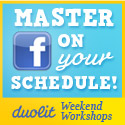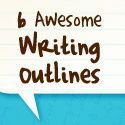If you want to succeed long-term as an author, regardless of you choose traditional or self-publishing, there’s one thing you can do early on in the process that will help make that dream a reality: cementing your branding.
With the tens of millions of titles out there, competition for eyeballs is fierce, and taking the steps to develop your brand now can save you time, money, and heartache down the road. Understandably, this can bring about many questions like: What the heck is a brand? or Isn’t that just for Nike and McDonalds? and Isn’t that the same thing as a logo? If you’re short on time, get it in touch with us and we’ll walk you through the process personally. Or, read on to discover the nuances of the simple-to-learn-impossible-to-master concept of branding.
Branding Basics
Your brand is all of the thoughts, feelings, images, and expectations associated with your work. When someone hears your name, what do they think? Well, perhaps now the answer is ‘Who?’ but if your goal is to change that, start working on your brand now. Since branding is a difficult concept to master without a concrete example, let’s do a little case study of a branding giant: the Super Bowl. They don’t get people to shell out millions of dollars for a 30-second commercial spot just by happenstance. They’ve worked long and hard to make all of us think that for those 4 hours (plus 6 hours of pre-and post-game) comprise the most important sports event that occurs all year.
But what are the components that make up the Super Bowl brand? First of all, it’s the name. I mean, they call the event the SUPER BOWL, as in THE GREATEST BOWL EVER. Second of all, it’s the nature of the event itself; drama and suspense, winners and losers. It’s not just a sporting event; it’s about people. There’s always a story – this grabs even Mopey McDrama pants who doesn’t give a hoot about sports. And then, if that’s not even enough, they pack it full of entertainment – the game, the halftime show, the commercials — all flashy and in your face and designed to make sure you don’t even THINK about changing the channel, lest you be woefully left out of the water cooler conversation the next day.
And it never changes. This consistency is key. You won’t randomly turn on the TV one day to find out that there’s another Super Bowl, this one in the fall. You won’t suddenly see a pink and green Super Bowl logo. You won’t just discover that the game is being played the day before it happens. You won’t spend the breaks watching commercials for Oprah or Dr. Oz (unless he’s getting electrocuted by his dog for a bag of Doritos). Their brand is solid, consistent, and effective.
How Branding Can Help YOU
I know what you’re thinking. That’s super-duper, Toni. Thanks for going on a three-paragraph diatribe about how the biggest American sporting event has excellent branding. Well, of course they do. They have tons of people who have been working on this for over forty years. I’d hope they’d be good at it by now. But what does this mean for me? I’m not the Super Bowl. No one’s going to be paying 2.5 million for a sentence-long ad in my book. While that may be true (although we can all dream), even the Super Bowl started somewhere. You can start now by deciding that when people hear your name, you want them to think _____ . To feel ______. To see ______. It’s up to you. You have the control over your brand, and there’s no better time to start than now.
It’s Not Just A Logo
So, let’s start now. If there’s one thing you take away from this page, it’s this. A LOGO DOES NOT EQUAL A BRAND. Please repeat it to yourself, at least once. There. Sigh. That makes me happy. Many designers (some of whom I’ve met) will tell you differently and they’re wrong. A logo is an important part of a brand, but there are so many other things to keep in mind, such as:
- Your voice (in writing and in person)
- Colors (google color psychology – it’s crazy stuff)
- Typography (A physist wouldn’t write his thesis in Comic Sans)
- Thoughts and Feelings (How do you want people to feel about you and your writing?)
And everything else that makes you, well, you. The key here is to figure it all out and write it down so that you can be consistent. Not only will this make you unique in a sea of authors who come and go with the breeze, but it will make you look a heck of a lot more professional. Good branding makes people take notice; it shows them you’re for real, and you’re going to be here for awhile. This is especially helpful if you eventually want to make the jump from self-publishing to traditional publishing, but even more essential if you’re not.
Succinctly explaining everything that makes me me…sounds simple (not)!
This branding stuff can sound really complicated, and while it is, it’s also extremely important to your longevity as an author. So if your goal is to stick around for awhile, start working on your brand now. We have a whole category of blog posts dedicated to the branding, allowing you to get your learn on on your own time. And if you’re totally overwhelmed and have no idea where to start — contact us, and we can work with you to develop your own personal brand. It may not be the Super Bowl but, hey, it’s a start!


 We're
We're 








